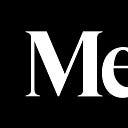Medium: Diversity and Inclusion
2017 edition
At Medium, we strive to be the best place online to find interesting ideas and perspectives you won’t find anywhere else. As a company, we believe that diverse perspectives deepen our understanding of complex issues, and great ideas can change the world when you create a welcoming space for them. Diversity for us includes, but is not limited to, gender, ethnicity, race, culture, socio-economic background, religion, age, physical ability, veteran status, country of origin, primary language, sexuality, political preference, education, and family makeup.
In the past year, Medium has gone through a lot of changes but we’ve remained constant in our commitment to diversity and inclusion. We’re dedicated to building a team that not only embraces but seeks out a diverse group of people. We’re committed to being a place that welcomes and includes all the things that make each of us unique.
In 2016, we signed the Tech Inclusion Pledge, and as a part of that pledge, we wanted to share with you our 2017 numbers. To us, this means more than just signing a pledge; it’s an ongoing promise to which we are committed.
The data
What you see below was primarily collected through an optional survey we sent to our staff last month and is valid as of December 1st, 2017. A few notes on the data:
- Some gender, race, and ethnicity data was supplemented with our HR data if individuals chose not to respond.
- We separate our statistics into tech — which includes engineering, product, and data science — and non-tech, which includes (but is not limited to) marketing, content, operations, human resources, and design. We do not separate the demographics for other functional groups because their small size precludes anonymity.
- Senior employees are defined as individuals who are either an executive or are in one of the top two levels of our five-tier internal leveling system.
1. Who are we?
In addition to more traditional diversity questions, the survey our team took also included things about their interests, skills, and habits. Employees feel their skills and abilities are well represented in the tech industry, but within Medium, a lot of employees feel like they’re more extroverted than the rest (we do have a lot of introverts).
2. Gender
Looking specifically at gender, we’ve had a decrease in female employees in the past year. Last year, 46% of the staff were women; this year we’ve dropped to 40%. Our team today has a much higher percentage of engineers compared to other roles than this time last year — when we dug deeper, we saw a 2% lift in female engineers over the year (from 36% to 38% of the technical teams).
When we look at women in senior level roles, we see a drop from 26% in 2016 to 23% now. This decrease is one we are not happy to see but we are aware of it, and working towards improving it.
3. Race and ethnicity
Looking at diversity from a race and ethnicity perspective, we see some pretty strong improvements. There was an increase from 6% to 11% of those identifying as Black or African American. We also saw some smaller increases in the percentage of employees who identify as Asian, Hispanic or Other (meaning an identity not represented by one of the presented options).
At the Senior level we lack Hispanic and Black or African American representation.
4. Beyond gender, race, and ethnicity
Other notable changes from last year: we’ve increased the number of new grads and remained consistent with LGBTQ representation and diversity of origin.
5. Measuring inclusion
Measuring inclusion in the workplace is a more challenging task. We approached it by asking our team what demographics are under-represented at Medium and in which parts of the organization. The answers varied, but the majority noted that we need to diversify our leadership team, and in general broaden our gender and racial diversity. Some employees also felt that we would benefit from increasing the representation of people with a larger range of skills and abilities, as well as older and more experienced employees. They also called for diverse points of view either due to their background or political preferences.
Beyond the data
Data can only tell part of the story. This year, we’ve been really excited to have created a Diversity and Inclusion Committee. The mission is, as you might expect, to increase, promote, and improve diversity and inclusion at Medium, within both the company and product.
The D&I group will be auditing our hiring practices, enabling employee-driven initiatives, and building awareness of the importance of diversity and inclusion within our organization. Additionally, the group will work on ways to better elevate stories that give our readers the most diverse and well-rounded experience possible.
Diversity and inclusion is something we’re dedicated to, because we know the stronger and more diverse we are as a team, the better product and experience we can provide our users. We also know there’s still a lot of work to be done, and we’ll be working hard to make 2018 an even stronger year.

